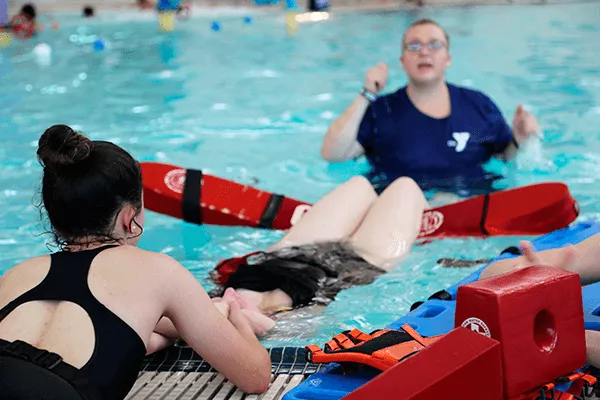In the realm of aquatic safety, lifeguards play a critical role. They are the unsung heroes who ensure that our time at the pool or beach remains enjoyable and, most importantly, safe. Becoming a lifeguard, however, is no small feat. It requires rigorous training, a deep understanding of water safety protocols, and the ability to respond swiftly and effectively in emergencies. The American Lifeguard Association (ALA) stands out as a premier institution providing top-notch lifeguard training. This article delves into the intricacies of lifeguard training and highlights the exceptional programs offered by the ALA.
The Importance of Lifeguard Training
Lifeguard training is essential for anyone aspiring to work in this field. It equips individuals with the skills and knowledge necessary to prevent accidents, respond to emergencies, and provide first aid when needed. Proper training ensures that lifeguards can confidently handle a variety of situations, from rescuing distressed swimmers to performing CPR.
A well-trained lifeguard can mean the difference between life and death. According to the Centers for Disease Control and Prevention (CDC), about ten people die from unintentional drowning every day in the United States. Effective lifeguard training can significantly reduce these numbers by preparing lifeguards to act promptly and efficiently.
Components of Lifeguard Training
Lifeguard training programs are comprehensive, covering a wide range of topics to ensure that participants are well-prepared for their roles. Key components of lifeguard training typically include:
1. Water Rescue Techniques
Water rescue techniques are at the core of lifeguard training. Trainees learn how to identify and approach distressed swimmers, execute various rescue maneuvers, and safely bring victims to shore. This includes surface dives, underwater searches, and the use of rescue equipment such as lifebuoys and rescue tubes.
2. CPR and First Aid
Cardiopulmonary resuscitation (CPR) and first aid training are critical components of lifeguard training. Lifeguards must be proficient in performing CPR on adults, children, and infants, as well as providing basic first aid for injuries like cuts, fractures, and burns. This training ensures that lifeguards can sustain life and stabilize victims until professional medical help arrives.
3. AED Training
Automated External Defibrillator (AED) training is also essential. Lifeguards learn how to use AEDs to restart a victim’s heart in cases of sudden cardiac arrest. This training is vital, as the timely use of an AED can significantly increase a victim’s chances of survival.
4. Water Surveillance
Lifeguards must be adept at water surveillance to prevent accidents before they occur. Training includes instruction on how to scan large areas of water, recognize signs of distress, and maintain vigilance even during periods of low activity. Effective surveillance is key to identifying potential hazards and intervening before they escalate.
5. Spinal Injury Management
Spinal injuries can occur during water activities, and lifeguards must be prepared to manage them. Training includes techniques for immobilizing and safely removing victims with suspected spinal injuries from the water, minimizing further harm.
6. Emergency Action Plans
Lifeguard training also involves developing and practicing emergency action plans (EAPs). These plans outline the steps lifeguards should take during various types of emergencies, ensuring a coordinated and efficient response.
The American Lifeguard Association: A Leader in Lifeguard Training
The American Lifeguard Association (ALA) is a respected leader in the field of lifeguard training. With a mission to promote aquatic safety and prevent drowning, the ALA offers comprehensive training programs that equip lifeguards with the skills and knowledge needed to excel in their roles.
ALA Training Programs
The ALA provides a variety of training programs tailored to different needs and levels of experience. Their programs are recognized for their thoroughness, high standards, and emphasis on practical skills. Here are some of the standout features of ALA’s training programs:
1. Comprehensive Curriculum
The ALA’s lifeguard training programs cover all essential aspects of lifeguarding, from water rescue techniques and CPR to AED use and emergency action planning. The curriculum is designed to ensure that participants gain a deep understanding of water safety and emergency response.
2. Experienced Instructors
ALA training programs are led by experienced instructors who are experts in aquatic safety. These instructors bring a wealth of knowledge and practical experience to the training, providing participants with valuable insights and guidance.
3. Hands-On Training
The ALA emphasizes hands-on training, allowing participants to practice their skills in real-life scenarios. This practical approach ensures that trainees are well-prepared to handle emergencies confidently and effectively.
4. Flexibility and Accessibility
The ALA offers flexible training options, including online and in-person courses, to accommodate different schedules and learning preferences. This accessibility makes it easier for aspiring lifeguards to receive the training they need, regardless of their location or availability.
5. Certification and Recertification
Upon successful completion of ALA training programs, participants receive certification that is widely recognized and respected in the industry. The ALA also offers recertification courses to help lifeguards maintain their skills and stay up-to-date with the latest safety protocols.
Why Choose ALA?
Choosing the ALA for lifeguard training comes with numerous benefits:
- Reputation and Recognition: The ALA is a well-established organization with a strong reputation for excellence in aquatic safety training. Their certifications are recognized and valued by employers across the country.
- Comprehensive Training: ALA training programs are thorough and comprehensive, ensuring that lifeguards are fully prepared for their roles.
- Experienced Instructors: ALA instructors are seasoned professionals who provide high-quality training and support.
- Flexible Learning Options: With online and in-person training options, the ALA makes it easy for individuals to access the training they need.
- Commitment to Safety: The ALA is dedicated to promoting aquatic safety and preventing drowning, making it a trusted partner in the quest for safer water environments.
Conclusion
Lifeguard training is a vital component of ensuring aquatic safety. Well-trained lifeguards can prevent accidents, save lives, and provide essential first aid in emergencies. The American Lifeguard Association stands out as a premier provider of lifeguard training, offering comprehensive programs that equip individuals with the skills and knowledge needed to excel in this crucial role. Whether you’re an aspiring lifeguard or an employer seeking the best training for your staff, the ALA’s programs are a top choice for quality and excellence in lifeguard training.Dive into Safety: Comprehensive Lifeguard Training by the American Lifeguard Association


